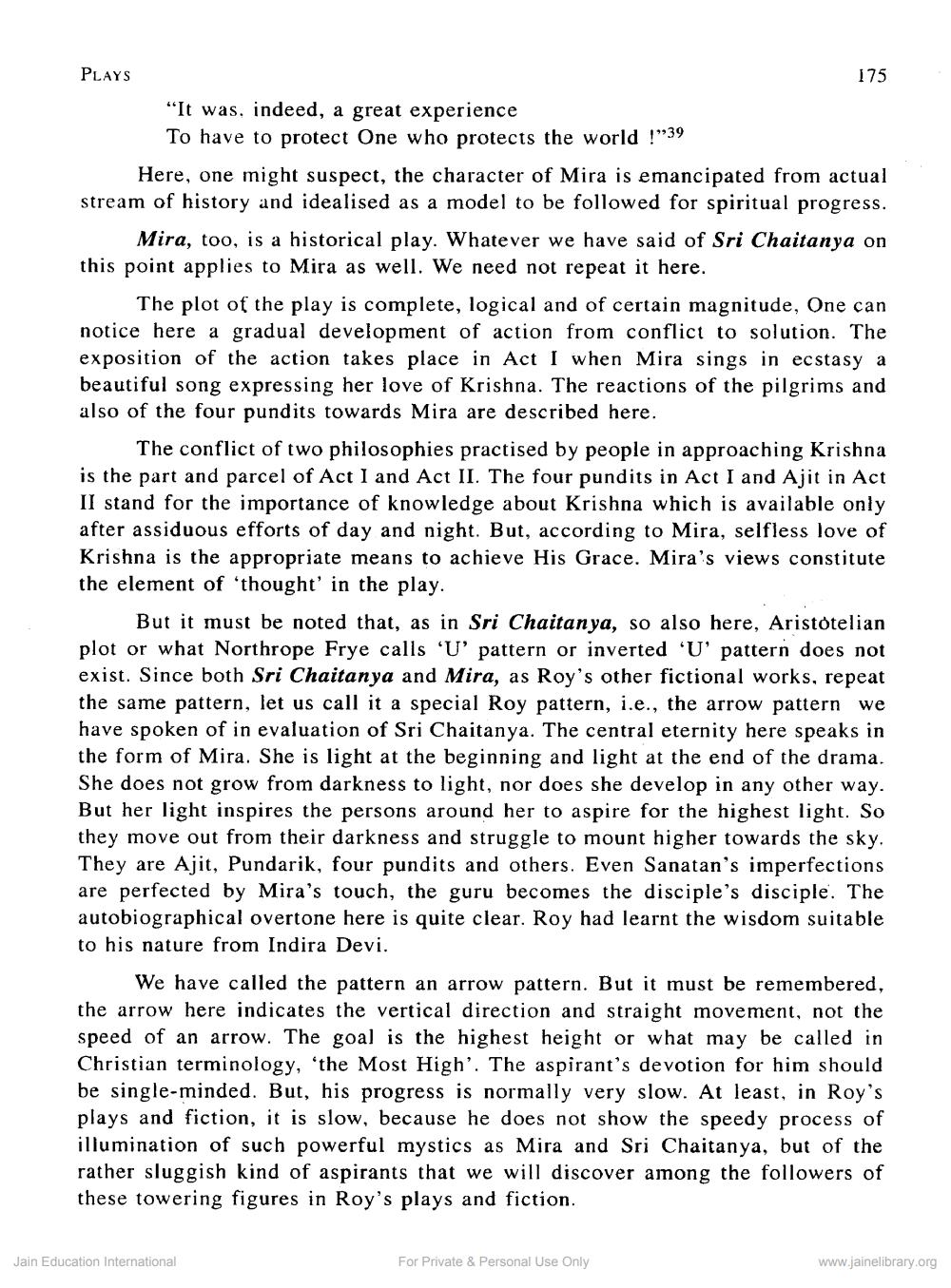________________
PLAYS
175
"It was, indeed, a great experience To have to protect One who protects the world !"39
Here, one might suspect, the character of Mira is emancipated from actual stream of history and idealised as a model to be followed for spiritual progress.
Mira, too, is a historical play. Whatever we have said of Sri Chaitanya on this point applies to Mira as well. We need not repeat it here.
The plot of the play is complete, logical and of certain magnitude, One can notice here a gradual development of action from conflict to solution. The exposition of the action takes place in Act I when Mira sings in ecstasy a beautiful song expressing her love of Krishna. The reactions of the pilgrims and also of the four pundits towards Mira are described here.
The conflict of two philosophies practised by people in approaching Krishna is the part and parcel of Act I and Act II. The four pundits in Act I and Ajit in Act II stand for the importance of knowledge about Krishna which is available only after assiduous efforts of day and night. But, according to Mira, selfless love of Krishna is the appropriate means to achieve His Grace. Mira's views constitute the element of thought in the play.
But it must be noted that, as in Sri Chaitanya, so also here, Aristotelian plot or what Northrope Frye calls 'U' pattern or inverted 'U' pattern does not exist. Since both Sri Chaitanya and Mira, as Roy's other fictional works, repeat the same pattern, let us call it a special Roy pattern, i.e., the arrow pattern we have spoken of in evaluation of Sri Chaitanya. The central eternity here speaks in the form of Mira. She is light at the beginning and light at the end of the drama. She does not grow from darkness to light, nor does she develop in any other way. But her light inspires the persons around her to aspire for the highest light. So they move out from their darkness and struggle to mount higher towards the sky, They are Ajit, Pundarik, four pundits and others. Even Sanatan's imperfections are perfected by Mira's touch, the guru becomes the disciple's disciple. The autobiographical overtone here is quite clear. Roy had learnt the wisdom suitable to his nature from Indira Devi.
We have called the pattern an arrow pattern. But it must be remembered, the arrow here indicates the vertical direction and straight movement, not the speed of an arrow. The goal is the highest height or what may be called in Christian terminology, the Most High'. The aspirant's devotion for him should be single-minded. But, his progress is normally very slow. At least, in Roy's plays and fiction, it is slow, because he does not show the speedy process of illumination of such powerful mystics as Mira and Sri Chaitanya, but of the rather sluggish kind of aspirants that we will discover among the followers of these towering figures in Roy's plays and fiction.
Jain Education International
For Private & Personal Use Only
www.jainelibrary.org




